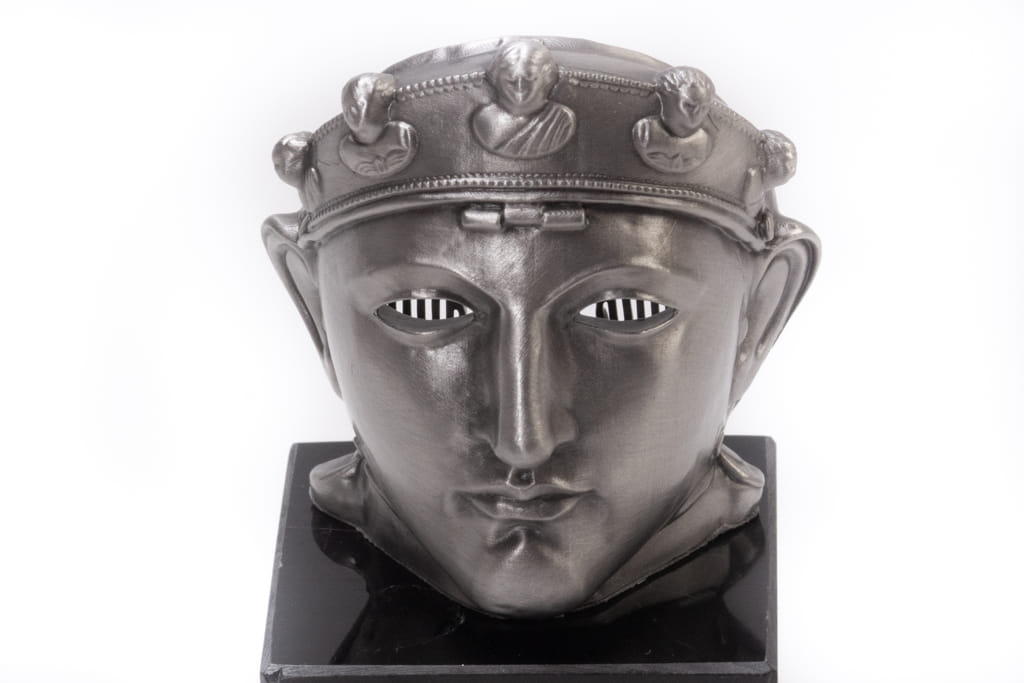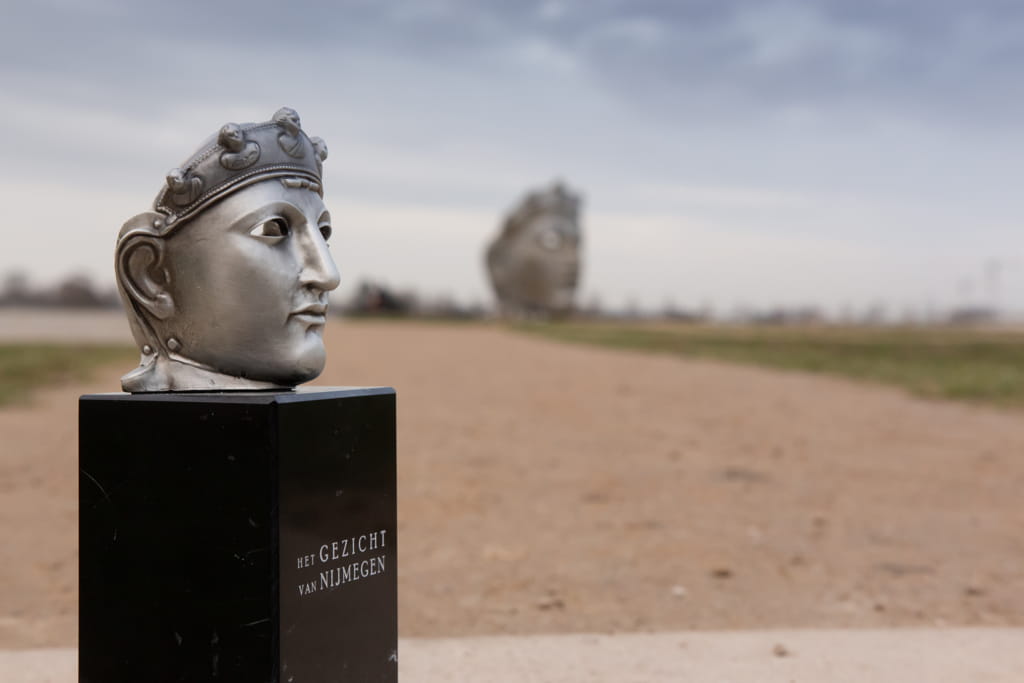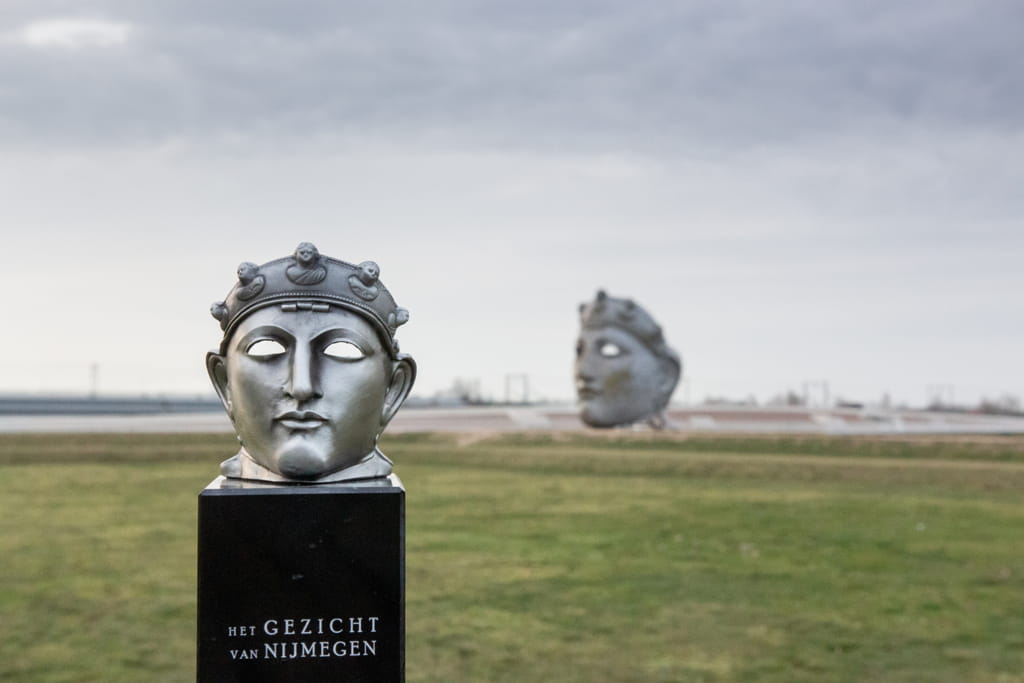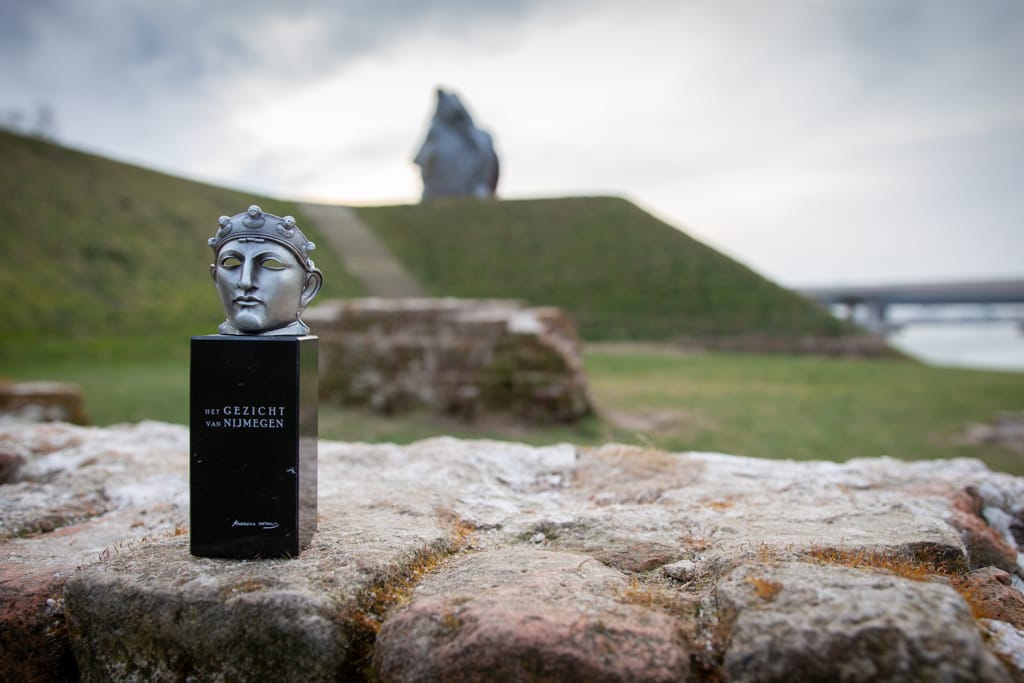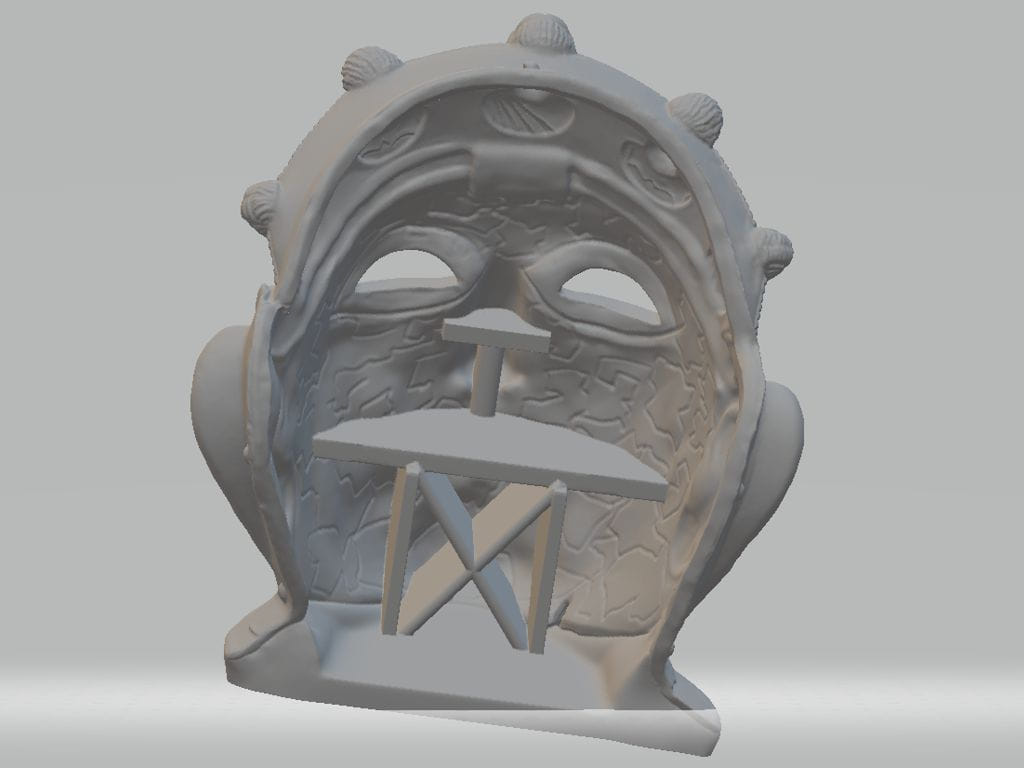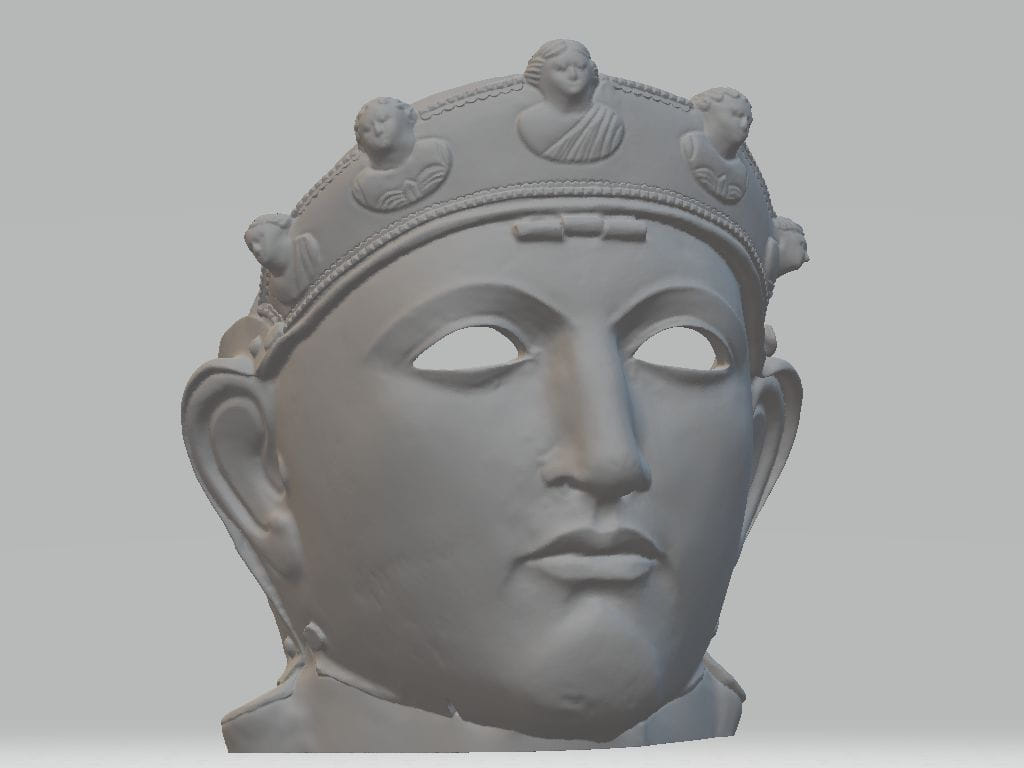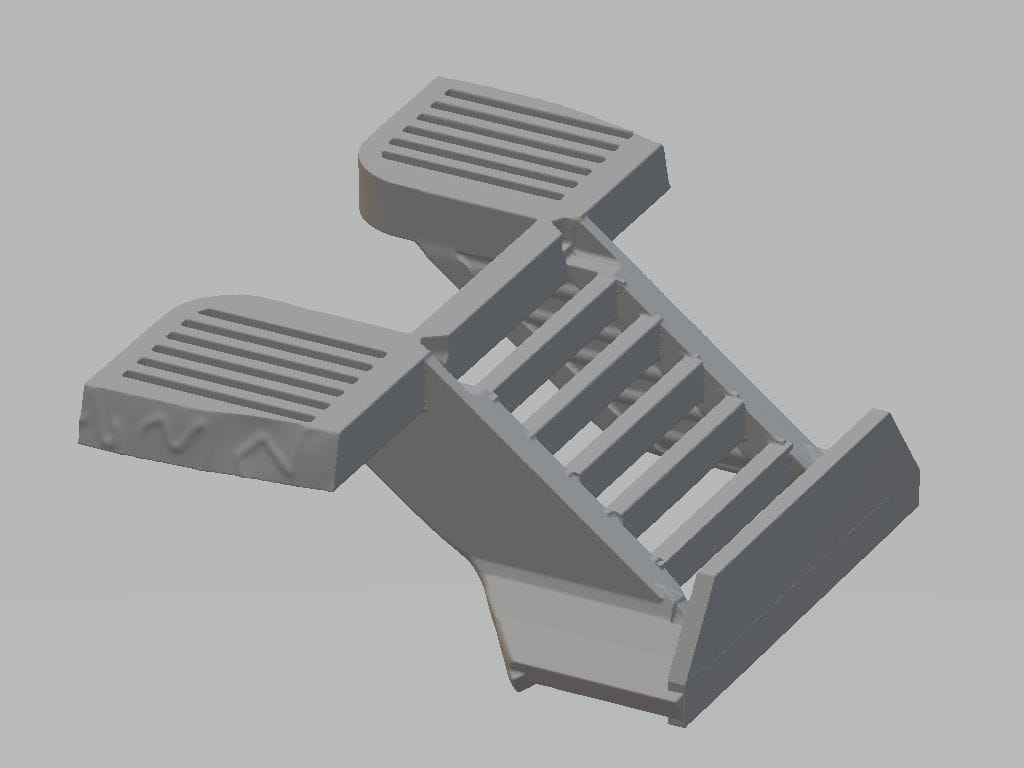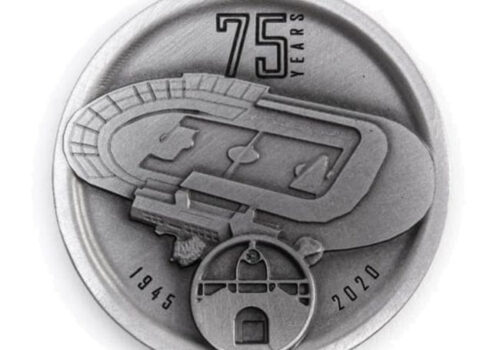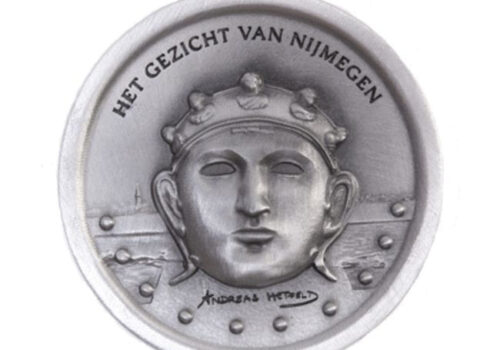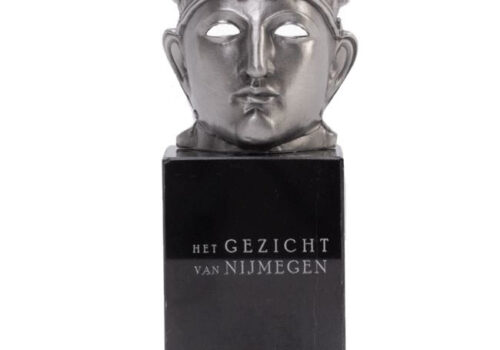The Face Of Nijmegen keychain
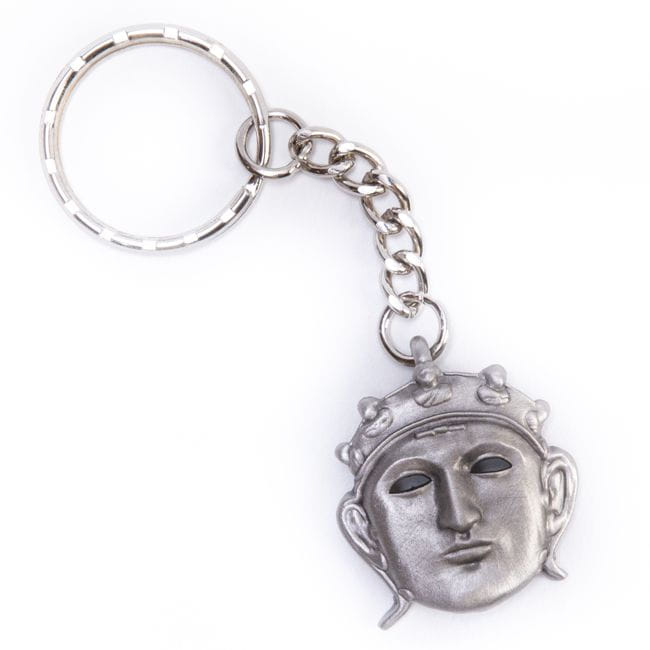
Client: Andreas Hetfeld
DTR design: Eduardo Pérez
Material: tin
From archaeological find …
The mask on which Andres Hetfeld based his artwork has its origin in an archaeological find of a 2,000-year-old Roman equestrian mask – one of the oldest and most beautiful objects in the history of Nijmegen and the Netherlands. This face helmet has been on display in Museum Het Valkhof for many years. Around 1915 it would have been dredged in the Waal, near the Nijmegen railway bridge. The original mask is covered with brass and bears traces of silvering and gilding.
… To a monumental work of art
Artist Andreas Hetfeld was captivated by the beauty of the equestrian mask that inspired him to create the monumental work of art “The Face of Nijmegen”. After a majestic journey across the Waal, the 6-meter-high mask artwork has been on the city island of Veur Lent since April 2020. Since then, the iconic image has magically attracted visitors and photographers. Photos of the statue have now spread all over the world as a symbol of hope, strength and protection.
Collaboration Hetfeld and De Tinnen Roos
The artist has sought collaboration with the craft company De Tinnen Roos to develop and manufacture some beautiful products of the artwork. De Tinnen Roos is located in Millingen and is known far beyond the national borders for its craftsmanship and detailed products. Millingen is also the place where Shipyard Millingen produced “The Face of Nijmegen”.
What our clients say
Planning to create a souvenir?
Do you have a special work of art that you want to capture in a unique way? De Tinnen Roos thinks along with you in the design and manufacture of a souvenir. Suitable as a gift to special people, but also for private sale as a souvenir. Please feel free to contact us for the possibilities and a quotation.
We’ve been producing unique and beautiful souvenirs for a large variety of clients
Techniques
Design and model
Design on the computer
For the design of this keychain, existing 3D drawings were used that formed the basis of the artwork. These drawings were not suitable for the production of the souvenir line. That is why adjustments have been made within De Tinnen Roos, using ZBrush and SolidWorks. Together with detailed photos of the artwork itself, a flatter version of the mask was created.
3D printing
We were able to make the completed 3D drawing tangible with the 3D printer. The parts are built up layer by layer. A frame is printed on the sides of the parts to ensure that the hot mass does not collapse during printing. Before the parts can be used, the frame must be cut off and the object thoroughly cleaned with alcohol.
Casting
Making mold and casting
A number of masters were cast in a first mold using the plastic print. Masters are used to make the production mold. All molds are manufactured in-house and adapted per product for the best casting results. The View of Nijmegen consists of two separate parts. The Face of Nijmegen key ring consists of two separate parts. The mask and a key ring with chain. Only the mask is cast.
Eyelet cast in the mold
To attach a key ring to the mask, the mask has a ring on the back. For this mask it was decided not to place a separate eyelet of another material in the mold, but to cast the eyelet of tin in the mold. The mold has been adapted to this. At the location of the eye, the cut is made in such a way that the opening is made by a protrusion of the silicone. While the mask is being removed, the mold is folded slightly in that place, causing the object to come loose from the mold.
Alloy
It is cast with a tin alloy. This alloy is produced by ourselves in the casting pots. With each pour, the mixture is manually poured into the spincasting machine.
Finishing
Finishing with acids
After cutting the mask clean and grinding the edges, the whole is not yet ready. The dull silver color of the material itself is still present. To get the antique look of our end product, the mask has been given an acid bath. The entire surface was carefully made free of grease and dust before the acid was added. The smallest details were brushed with a toothbrush so that no spots were missed. Finally, the mask has been brushed clean to buff away the dark layer and give the miniature artwork its final appearance.
Assemble
The mask and key ring are manually attached to each other. We open the last ring of the chain with a pair of pliers. The ring is put through the eye behind the mask and then folded closed. The key ring is now completely finished and ready for the consumer.


